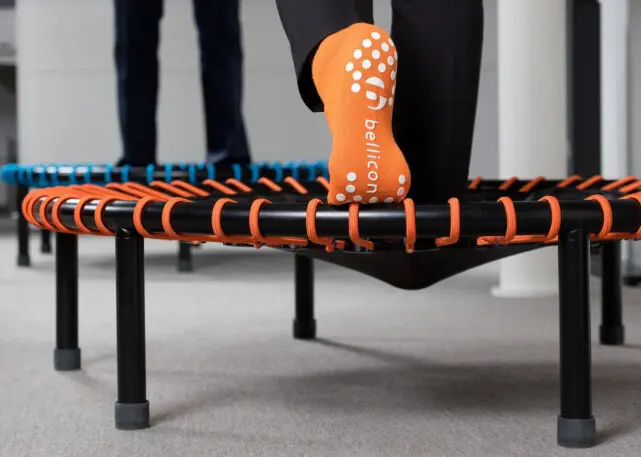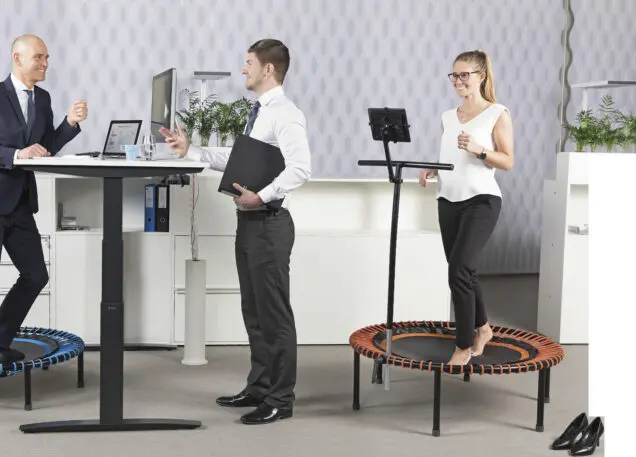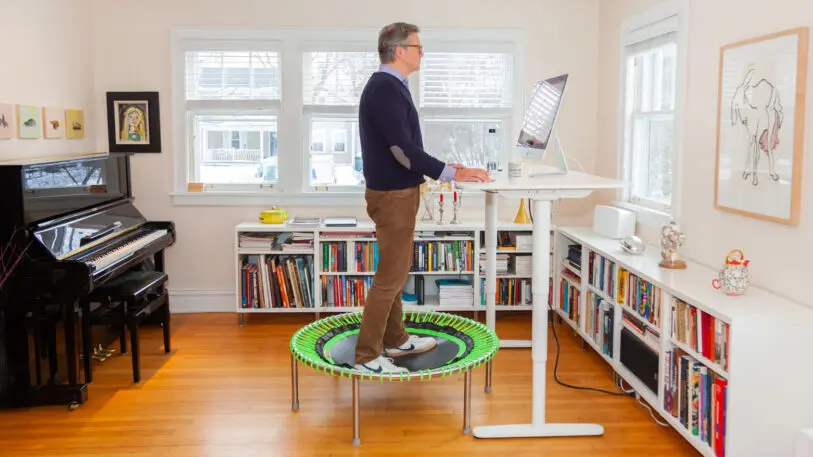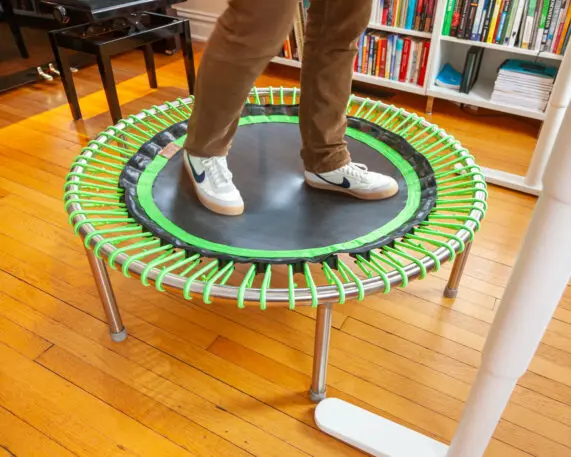For many people who suddenly had to switch to remote work, the one-year work-from-home anniversary is coming up fast. A year in, workers are still trying to figure out the best home-office setup. Some of us have graduated from couch to desk. Others, concerned about too much sitting, switched to standing desks. But one company says even standing is not enough to combat our sedentary lifestyles. The solution? Trampolines, apparently.
Bellicon is a maker of mini-trampolines, or “rebounders,” principally for fitness workouts known as rebounding. But the company has also tried to make trampolines a central part of work well-being. For office workers, that could mean taking breaks from the desk to rebound or, better yet, working at a standing desk while constantly bouncing.



Hines laments that the pitch to offices never took off—a shame, because of the many fitness benefits. “It’s really unknown,” he says. “It’s not in the canon of exercises.” Many resources agree rebounding is good for conditioning: It engages many muscle sets and gives a good cardio workout with the potential to burn fat. Besides, in Hines’s personal experience, it’s simply a “euphoric,” mood-boosting experience. He says he felt less lethargic and more productive when he used his rebounder regularly at the office. “I felt there was a spring—we use bungees—but there was a spring in my step,” he says.

A NASA study published during the height of the “rebounding craze” of the early ’80s is the most frequently cited by pro-bouncers. It showed that physical output was greater from jumping on a trampoline than running, thanks in part to the g-force. But a 2015 New York Times health column said newer studies have disagreed with that conclusion. “By most estimates,” wrote the columnist, Gretchen Reynolds, “rebound exercise is, at best, aerobically mild, requiring less effort than bowling and about the same as playing croquet.” (Reynolds did not list any sources for this assertion.)
Still, the company is insistent on its claims that rebounding “protects you from disease,” making a financial argument that businesses can therefore save on healthcare costs. Bellicon claims average healthcare costs at about $12,800 per employee per year and cites an average of 14 sick days. If rebounding “counteracts the multitude of health problems,” then investing in a trampoline pays dividends, it says. The Bellicon workplace model is priced at $459, less than the cost of two sick days per employee, which it estimates at $720.
For now, the company is still working on getting the message out—which includes eradicating one of the sticking points. “The biggest problem is that a fitness trampoline looks like a child’s toy,” Hines says. “A lot of people can’t get past that, and they don’t realize that what they’re really seeing is a gravity-generating device.”
Recognize your brand's excellence by applying to this year's Brands That Matters Awards before the early-rate deadline, May 3.
